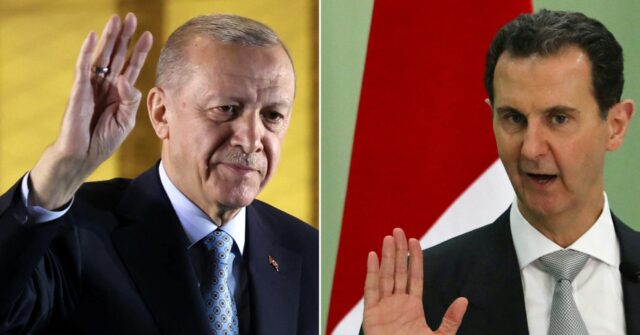The Syrian jihadist group Hayat Tahrir al-Sham (HTS), previously known as the Nusra Front and linked to al-Qaeda, has recently made headlines due to its ambitious plan to overthrow the Syrian regime led by Bashar Assad. According to reports, HTS communicated its intentions to the Turkish government six months ago, unveiling a strategy to seize control over significant territories in Syria, including Aleppo, which they accomplished in late November. This unexpected offensive culminated in Assad’s evacuation from the country, reportedly landing in Moscow shortly thereafter. The United States has placed a $10 million bounty on HTS leader Abu Mohammed al-Jolani, underlining the group’s notoriety and potential threat in the region.
Turkey has played a crucial role throughout the Syrian conflict, often intervening militarily under the pretext of combating threats posed by Kurdish forces aligned with the U.S. Despite Erdogan’s public affirmations against Assad’s regime, Turkey has strategically maintained a degree of distance from the direct conclusion of the conflict. Erdogan’s recent comments suggest a continued hope for regime change, as he stressed the significance of rebel advances towards key cities like Idlib and Damascus, aiming to inspire further momentum in this regard. This complicates Turkey’s complex relationship with both the Syrian government and opposition factions within Syria.
The relationship between HTS and Turkey has historically been strained, with Turkey deeming HTS a terrorist organization despite both entities sharing an overarching objective of displacing the Assad regime. Notably, sources informed Reuters that HTS had approached Turkish officials about their plans for the regime change, confident that Turkey’s non-intervention would allow their operations to proceed smoothly. Although Turkey has supported various opposition groups, it appears that HTS sought to assure Ankara that other failed strategies in Syria warranted a fresh approach. Erdogan’s declaration to create a conducive atmosphere for peace in Syria, coupled with a willingness to restore relations with Assad, reveals a significant shift in Turkey’s stance, although the authenticity of such overtures remains questionable.
Erdogan’s public invitations to Assad highlight his attempt to reestablish ties, yet multiple Turkish media sources suggest that this overture was motivated by Assad’s rejection of such diplomacy. As tensions rise, concerns about a potential power vacuum are materializing, especially given Turkey’s engagement with their proxy force, the Syrian National Army (SNA). The SNA, formed from remnants of the Free Syrian Army, has been primarily focused on countering Kurdish forces—viewed by Erdogan as an existential threat due to their connections with the PKK, a designated terrorist group by Turkey and the U.S.
Notably, the SNA and HTS maintain limited communication, primarily to avoid clashes during their respective military operations. A recent offensive in which the SNA purportedly expelled Kurdish forces from Manbij underscores the volatile dynamics on the ground. Meanwhile, ongoing relations between HTS and Kurdish factions seem to be characterized by a tactical necessity, with SDF commander Mazloum Abdi stating that there has been no direct hostility from HTS, albeit emphasizing the need for vigilance in securing their territories in northeastern Syria. Such relations indicate that the evolving conflict landscape necessitates pragmatic alliances amidst the ongoing civil war.
As the situation develops, the implications of HTS’s rise and Turkey’s positioning within the conflict further complicate an already intricate web of alliances and enmities in the region. HTS’s tactical advances against Assad’s forces, bolstered by covert understandings with Turkey, present a potential shift in the balance of power in Syria. Moreover, the reaction from U.S.-backed Kurdish forces highlights concerns over territorial integrity and security, likely prompting future clashes that could destabilize the fragile equilibrium in northeastern Syria. The shifting allegiances and the ongoing struggles for dominance exemplify the unpredictable nature of the Syrian conflict, with significant regional and international stakeholders continuously navigating their interests amidst an environment filled with uncertainty and potential for escalation.

